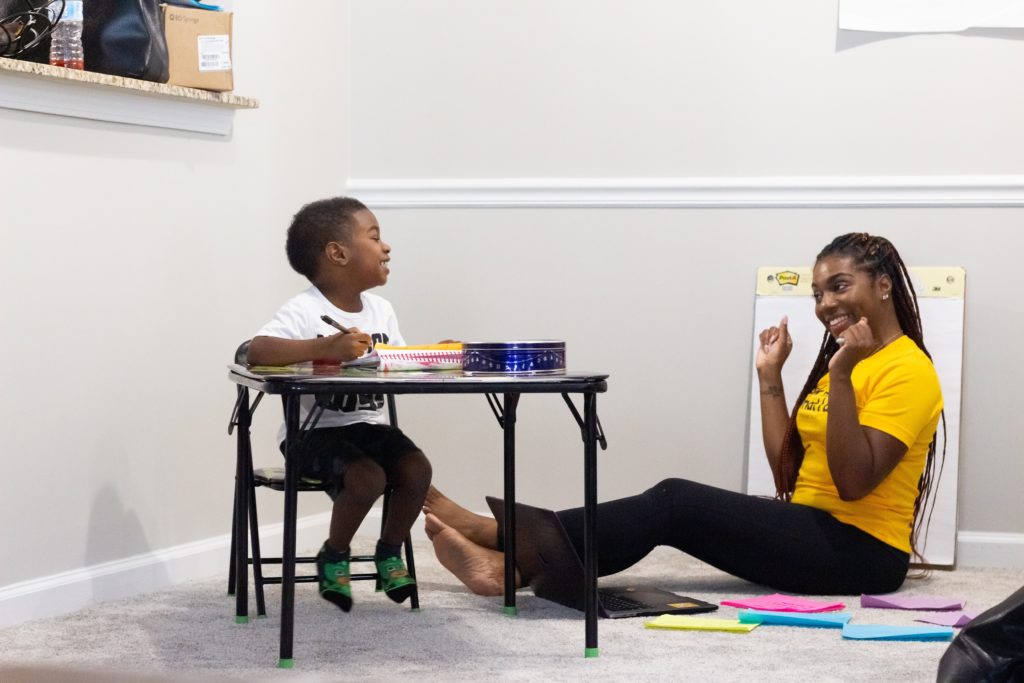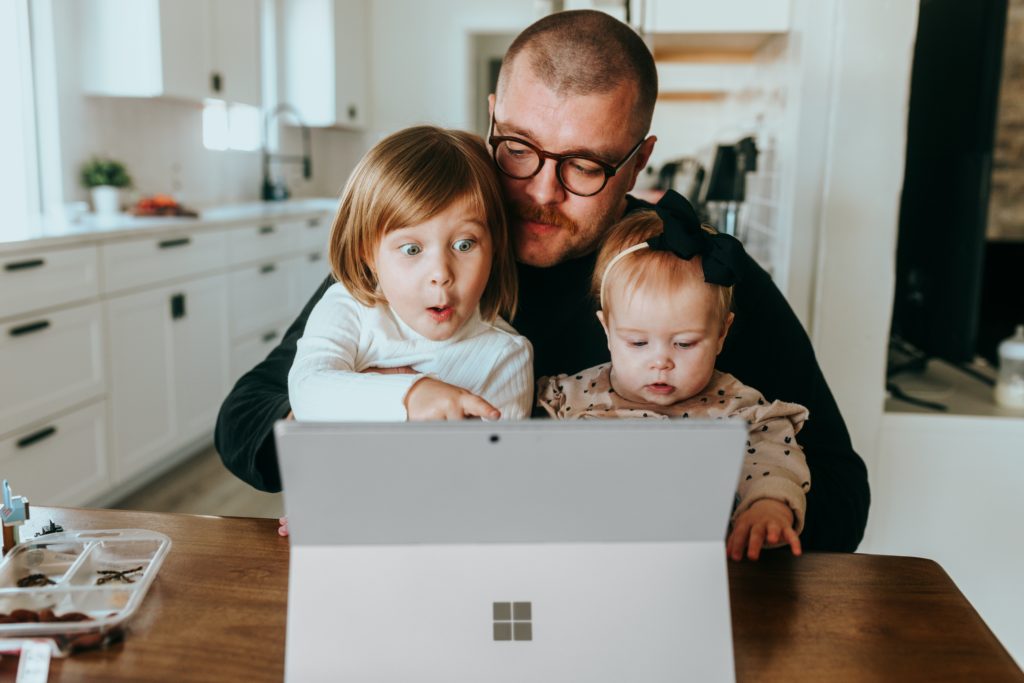If you want to help your child learn a new language but aren’t sure which family language strategy to employ, you’re in good company!
Whether you’re raising a bilingual child, navigating multilingualism as a family, or trying to help your child acquire a new language, having the right strategy is the recipe for success. This article explores the language strategy options you have and how to incorporate your favorites into your daily life to benefit you and your child.
As we’ll discover, research shows that the most effective language strategies are the Minority Language at Home (MLAH) and Mixed System (MS) approaches.
However, language learning is not one size fits all. The best language strategy is the one that fits your family’s needs, goals, and unique dynamics.
So you might be wondering how to choose the best family language strategy.
Let’s dive into some of the most popular language strategies so you can determine which is best for your family.
What Is a Family Language Strategy?
A family language strategy is the approach a family takes to help their child learn a language.
A language strategy will determine what language the child speaks at home and in public, who will speak in what language with the child, and whether there is a specific time and place for different languages.
Having a strategy can set a structure that makes it easier for your child to reach fluency.

4 Popular Family Language Strategies
1. One Person One Language (OPOL)
OPOL is one of the most widely used bilingual family language strategies.
In OPOL, each parent speaks to the children in a different language. Ideally, they speak in the language they feel most confident.
The OPOL strategy generally works for the following scenarios:
- Each parent speaks a minority language.
- One parent speaks a minority language, while the other speaks the majority language
Majority language refers to the language spoken by the greater community, while minority language refers to one that is not.
Advantages and Disadvantages
The most obvious benefit is that it introduces the child to two languages at an early age, which is ideal for language acquisition.
OPOL allows children to develop relationships with their parents in their respective languages, strengthening their emotional connection and preserving elements of each caregiver’s culture.
Though bilingual and multilingual families have been using OPOL for years, it is not a guaranteed pathway to language acquisition. Linguist researcher Annick De Houwer conducted a study with over 2,000 families utilizing the OPOL strategy and found that a quarter of the children did not become bilingual.
One of the issues that surfaced in Annick’s research was that children didn’t spend the same amount of time with each language.
There might also be a conflict if one parent speaks both languages while the other does not, limiting the time the family and child spend with the minority language.
See also: Does Being Bilingual Cause Speech Delays? and 8 Brain Benefits to Learning a Second Language
2. Minority Language at Home (MLAH)
MLAH is a language strategy in which the family speaks the minority or target language in the home while continuing to use the majority or community language outside the home.
For a native Spanish-speaking family living in the United States, the minority language would be Spanish, and the majority language would be English.
Who Should Use this Strategy?
The bottom line for families who utilize the MLAH strategy is that both parents speak the minority language at home. This means that parents must be native speakers or fluent in the target language.
Users of the MLAH strategy will generally be migrants or expats.
Here are some examples of families who could benefit from MLAH:
- Native Spanish-speaking parents living in the United States speak Spanish at home and English outside the home
- An American parent who speaks fluent Spanish and a parent from Mexico speaking Spanish at home
Advantages and Disadvantages
Families who immigrate or have multicultural backgrounds may fear their children will lose touch with their language and culture. The MLAH is one way to combat that.
Professor and language researcher Francois Grosjean believes this method is the most effective in obtaining bilingualism. It provides the child with sufficient exposure to the minority language and a clear distinction between when and where they should use which language.
Linguist Annick De Houwer’s research found that children whose parents spoke a minority language at home had achieved bilingualism with a success rate of 96.92%.
The most obvious disadvantage to this strategy is that, unless both parents are native speakers, they must at least have high proficiency in the language.
Time is another significant factor. If the parents cannot spend much time at home with the child, the child’s exposure to the language is limited. Furthermore, a child who speaks a minority language at home and has not socialized much in the majority language may have difficulties upon entering school.
We recommend: 8 Unexpected Challenges of Raising Bilingual Children and 7 Powerful Reasons Why Bilingualism in Children Matters
3. Mixed System (MS)
In families using a Mixed System strategy, one parent uses only the minority language (ml), and the other uses both the majority and minority language.
The languages are used interchangeably in a way that feels organic to the family.
Who Should Use this Strategy?
Families who use a mixed system as a language policy might include:
- Parents raising children in a two-language household
- Parents who want to help their children become fluent in the minority language spoken by one parent
Advantages and Disadvantages
Having a bilingual parent is an out-the-gate advantage in helping kids learn a new language.
One study found that in English and Spanish-speaking families who use this method, the children achieved bilingualism with a 93.42% success rate.
Families might also find this language policy the most natural and beneficial to their child’s emotional development. With this approach, families can connect in both languages, meaning children will see the most authentic versions of their parents.
However, in “Growing up with Two Languages: A Practical Guide for the Bilingual Family.”, J. Moore expresses a potential downside to this approach. “Our children will be bilingual and bicultural to the extent that we ourselves are,” he writes.
Speaking in the minority language might require extra effort for the parent, and if they are not intentional about using the language frequently, the chances of their child growing up to be bilingual decreases.
Do you want to help your child learn Spanish? Check out: Why Learning Spanish Is Your Child’s Key to a Better Future.
4. Time and Place (T&P)
With this approach, families will determine the appropriate settings to use each language. In other words, the child learns that there are specified times and places for the minority and majority languages.
Ways families might separate the use of language:
- The family will speak in the minority language at home unless there are guests
- The family will speak in the minority language on grocery trips, rides to school, and other errand activities
- The family will speak the majority language in public settings
- The family will split languages between weekdays and weekends
Who Should Use this Strategy?
Here are a few families who might consider the time and place strategy:
- Families who are native or fluent in more than one language
- Families in which one or both parents has limited proficiency in a second language
- Families who want to introduce a language to their child later in life
- Single-parent families who want to raise bilingual children
You might like: How to Raise a Bilingual Child in a Monolingual Household and 8 Reasons Why Bilingual Employees Get Paid More
Advantages and Disadvantages
The most significant advantage of this strategy is that families can customize it to their needs. Also, parents with native or fluent abilities in another language will have more opportunities to speak to their children in a second, third, or fourth language.
However, those who are not can still use this strategy within the limits of their proficiency.
For example, a parent whose vocabulary is limited to basic day-to-day activities can switch back to the majority language when discussing more complicated subjects.
There is not a lot of research surrounding the efficacy of the time and place approach, potentially because of its variability.
However, the time and place strategy requires families to be consistent and adamant about speaking each language in the assigned setting. Doing so is possible, but parents might find it tricky to enforce.
Additionally, if a child only hears the minority language in specific settings, they might not develop a full vocabulary or overall fluency.

Spanish and Family Language Strategies
At Homeschool Spanish Academy, we support families in their decision to learn any new language, but we have a special and strategic place in our hearts for Spanish.
The Spanish Ministry of Foreign Affairs reports that there are approximately 591 million Spanish speakers worldwide and that Spanish is the third most-used language on the internet.
Imagine equipping your child with the ability to communicate with that many people worldwide.
Also, children who learn Spanish grow up to be dynamic and multi-skilled adults who are better at problem-solving and are often more empathetic individuals.
On the professional front, being bilingual looks incredible on resumes, which opens doors for better employment opportunities, diverse jobs, and higher salaries.
The best part? You don’t have to know Spanish to help your children become fluent.
At Homeschool Spanish Academy, we provide learners with live K–12 Spanish instruction from certified, native Spanish-speaking teachers using our expert-certified curriculum.
With our classes, your child can work towards fluency, develop communication skills, and connect with trustworthy teachers whose passion is to help students achieve learner-specific language goals.
Want to help your child learn Spanish? Check these articles: Top Cost-Effective Spanish Class Options for Kids and How to Teach Your Child Spanish
Support Your Child’s Spanish Learning Journey
These strategies may be the most effective in helping children achieve language proficiency. But at the end of the day, the best approach will be the one that fits your family’s unique needs.
To support your child on their way to becoming bilingual in Spanish, consider signing up for a free trial class with one of our native Spanish-speaking teachers.
Our online Spanish school excels in providing student-tailored Spanish programs that are straightforward.
We can’t wait for your family to join us!


Join one of the 40,000 classes that we teach each month and you can experience results like these…

“This is the best way for your kid to learn Spanish. It’s one-on-one, taught by native Spanish speakers, and uses a curriculum.”
– Sharon K, Parent of 3

“It’s a great way to learn Spanish, from native Spanish speakers in a 1-on-1 environment. It’s been fairly easy to schedule classes around my daughter’s other classes. The best value for us has been ordering multiple classes at a time. All the instructors have been great!”
– Cindy D, Parent of 3

“HSA offers very affordable, quality, one on one classes with a native speaker. My son has greatly benefited from taking classes. We have seen his confidence increase as well as his pronunciation improve, because he learns from a native Spanish speaker. HSA has quick, personal customer service. Our family has been very pleased with our experience so far!”
– Erica P. Parent of 1
Want more free Spanish resources and learning strategies? Check these out!
- 6 Disadvantages of Homeschooling
- How To Teach Sight Words in Spanish to Kids
- 21 Unschooling Activities You Haven’t Tried Yet
- Homeschooling, Unschooling, or Deschooling: Which Is Right for Your Family?
- 20 Ways to Homeschool Spanish as a Non-Native Speaker
- 18 Creative Homeschool Storage Solutions You Definitely Need
- 9 Free Homeschool Curriculum Options with Daily Lesson Plans
- How to Homeschool for Free in 2023
The post Which Family Language Strategy Works for You? appeared first on Homeschool Spanish Academy.



